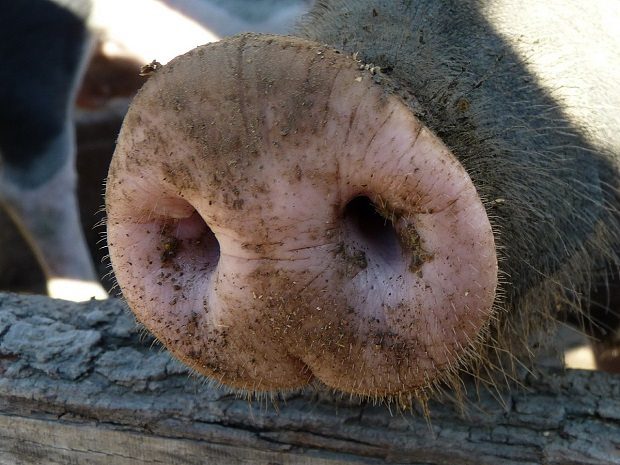[dropcap style=”font-size:100px; color:#992211;”]S[/dropcap]trong coffee, petrol fumes, yeast, a bass note of fermenting sewage. It must be… Paris!
Fried chicken, ripe apples, diesel fumes, Lush cosmetics, dried urine. London!
New research from India examines the role of smell in marketing, and how it can be applied to the consumer experience. In other words: how to make anonymous shopping streets and hotels worldwide not only look the same, but smell the same.
Consumerism: chipping away at those pesky irregularities of culture, geography and society that stand between You and Your Customer.
Smell-Based Marketing
Catch a whiff of an enchanting perfume, the sweet smell of freshly cut grass, newly baked bread, even the odor of two-stroke engine fumes, and many of us are whisked off to distant places in our memories. Smells trigger immediate emotional responses and marketing departments the world over have exploited this everywhere from supermarkets to car showrooms to help us part with our hard-earned cash.
Now, writing in the International Journal of Trade and Global Markets, Shuvam Chatterjee of the Regent Education & Research Foundation, in Dhakuria, India, discusses the concept of “olfactory branding” and how in some settings, such as the hotel lobby, it can supplant or augment the more traditional audiovisual marketing signals. Chatterjee explains how the Indian tourism and hospitality industry has emerged as one of the key industries driving the growth of the service sector. Moreover, while international tourism has increased, there is a huge, and growing domestic market, with some 30 million internal travelers each year. Obviously, hotels play an important role in this industry.
Earlier researchers have claimed that people remember 35% of what they smell, compared with only 5% of what they see, 2% of what they hear and 1% of what they touch. So, “scent makes a brand identity more unique, strengthens customer loyalty and adds to the perception of quality, an element that is essential to every brand in today’s competitive market,” Chatterjee writes. Intriguingly, the top ten “happy” smells are as follows: freshly baked bread, clean bed sheets, freshly mown grass, fresh flowers, freshly ground coffee, fresh air after rainfall, vanilla, chocolate, fish and chips, and bacon frying, according to earlier surveys.
Now, Chatterjee has surveyed guests at the ITC Sonar Luxury Hotels in Kolkata (formerly Calcutta), India, and found that more than 41% of guests agreed that scent is a key factor in the enjoyment of their hotel stay. Indeed, it is a more important factor than the hotel’s “infrastructure”, its food, and the behavior of staff. Chatterjee suggests that olfactory branding is therefore a critical part of marketing and could set any one hotel ahead of its rivals.
Source: Eurekalert/Inderscience Publishers

Some of the news that we find inspiring, diverting, wrong or so very right.




















